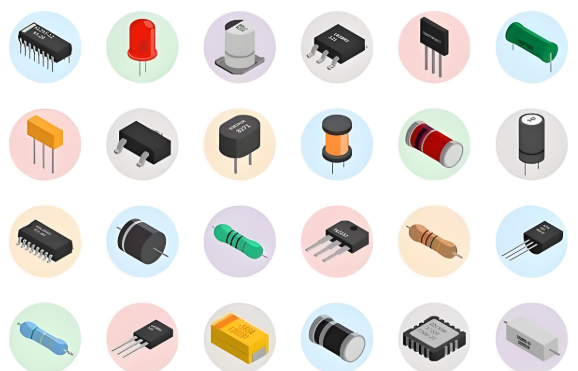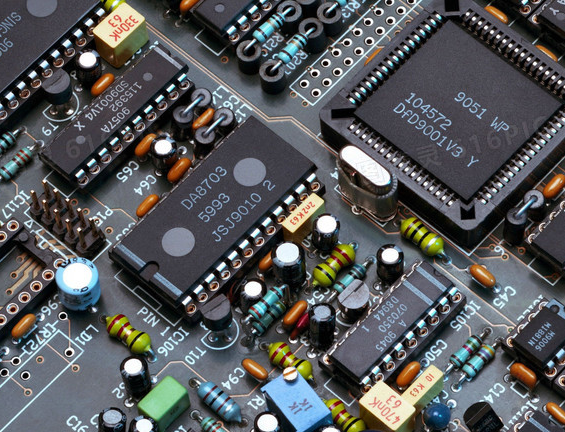The Ultimate IC Electronic Components Manual: Your Guide to Integrated Circuit Mastery
Introduction
In the intricate world of electronics, the integrated circuit (IC) stands as a monumental invention, the bedrock upon which modern technology is built. From the smartphone in your pocket to the sophisticated systems controlling satellites in orbit, ICs are the silent, powerful engines driving innovation. However, navigating the vast and complex landscape of these components can be a daunting task for engineers, students, and hobbyists alike. This is where a comprehensive IC Electronic Components Manual becomes an indispensable resource. It serves as a roadmap, translating complex datasheets and technical jargon into actionable knowledge. This article aims to function as a foundational chapter in your own mental manual, providing a deep dive into the types, functionalities, and critical selection criteria for integrated circuits. We will also explore how modern digital resources are revolutionizing the way we access this vital information, highlighting platforms like ICGOODFIND that are essential for staying current in this fast-paced industry.

Part 1: Demystifying the Integrated Circuit - Types and Classifications
Before one can effectively use an IC Electronic Components Manual, a firm grasp of the fundamental categories of integrated circuits is essential. ICs can be classified in several ways, but the most common distinction is between analog, digital, and mixed-signal circuits.
Analog Integrated Circuits process continuous signals. They are designed to work with real-world phenomena like sound, light, temperature, and pressure, which are inherently analog. Key examples include: * Operational Amplifiers (Op-amps): These are incredibly versatile components used for amplifying signals, performing mathematical operations (addition, subtraction, integration), and filtering. Their high gain and differential inputs make them a cornerstone of analog circuit design. * Voltage Regulators: As the name suggests, these ICs maintain a constant output voltage despite variations in input voltage or load current. Linear regulators are simple and provide low-noise output but are inefficient, while switching regulators are highly efficient but more complex and can generate electrical noise. * Sensors and Data Converters: This category includes ICs like temperature sensors, accelerometers, and crucially, Analog-to-Digital Converters (ADCs) and Digital-to-Analog Converters (DACs), which form the bridge to the digital world.
Digital Integrated Circuits, on the other hand, process discrete binary signals (0s and 1s). They form the logic and memory of computing systems. * Logic Gates (AND, OR, NOT, etc.): These are the fundamental building blocks of digital systems. They perform basic logical functions on one or more binary inputs to produce a single binary output. * Microprocessors and Microcontrollers: A microprocessor is a central processing unit (CPU) on a single chip, requiring external components for memory and interfaces. A microcontroller (MCU) is a more compact, self-contained system that includes a CPU, memory, and programmable input/output peripherals on a single chip, making it ideal for embedded systems. * Memory ICs: These store data and program instructions. They range from volatile Random-Access Memory (RAM), which loses data when power is off, to non-volatile memory like Read-Only Memory (ROM) and flash memory used in USB drives and SSDs.
Mixed-Signal Integrated Circuits combine both analog and digital circuitry on a single die. This integration is critical for modern applications where the analog world must interface with digital processing. A prime example is a modern System-on-a-Chip (SoC) found in smartphones, which might include analog RF receivers, power management circuits, ADCs, DACs, multiple microprocessor cores, and graphics processing units all integrated into one component.
Part 2: The Practical Application - How to Use an IC Electronic Components Manual
A theoretical understanding is useless without practical application. An effective IC Electronic Components Manual, whether in book form or an online database, provides the critical data needed to successfully implement an IC in a circuit design. The most important source of information for any specific component is its datasheet. Knowing how to read a datasheet is a non-negotiable skill.
The first step is Identifying the Component. The part number, usually printed on the chip casing (e.g., NE555, LM741, ATmega328P), is your key. Searching for this number in your manual or online database will bring up the correct datasheet.
Once you have the datasheet, several sections demand close attention: 1. Absolute Maximum Ratings: This is arguably the most critical section. These ratings specify the limits beyond which permanent damage to the device will occur. Exceeding these values, even for a moment, can destroy the IC. Parameters include supply voltage range, input voltage range, maximum output current, and operating temperature range. 2. Recommended Operating Conditions: This section provides the conditions under which the IC is designed to operate reliably and according to its electrical specifications. Your design should function within these parameters. 3. Electrical Characteristics: This table details the IC’s performance metrics under specific conditions. For an op-amp, this would include parameters like input offset voltage, slew rate, and gain bandwidth product. For a microcontroller, it would include current consumption at different clock speeds and I/O pin voltage levels. 4. Functional Block Diagram and Pinout: The block diagram gives you a high-level overview of the IC’s internal architecture. The pinout diagram is essential for physically connecting the chip correctly in your circuit. It identifies the function of each pin (e.g., VCC = power supply, GND = ground, IN+ = non-inverting input). 5. Application Circuits: Most datasheets include typical application circuits suggested by the manufacturer. These are excellent starting points for your own designs and demonstrate proper usage of the component.
In today’s digital age, static PDF datasheets are being supplemented by dynamic online platforms that aggregate and simplify this information. For instance, a resource like ICGOODFIND can be invaluable. Instead of manually sifting through hundreds of PDFs from different manufacturers, such a platform allows you to quickly cross-reference components, compare specifications side-by-side, find alternative parts (second sources), and access application notes and community forums. This transforms the traditional manual from a passive reference book into an interactive discovery tool.
Part 3: Selecting the Right IC - A Step-by-Step Guide for Your Project
Choosing the wrong IC can lead to project failure, wasted time, and budget overruns. A good IC Electronic Components Manual or database aids in making an informed decision. The selection process should be methodical.
First, clearly define your project’s Functional Requirements. What is the primary task? Is it amplifying a signal (analog), processing data (digital), or controlling a motor (mixed-signal)? The answer will point you toward the correct category of ICs.
Next, establish your Performance Specifications. These are quantitative metrics derived from your functional needs. * Speed/Power: For digital ICs like microcontrollers, this involves choosing the right clock speed for your computational tasks while balancing power consumption—a critical factor for battery-powered devices. * Precision/Noise: For analog components like op-amps or sensors, parameters like resolution, signal-to-noise ratio (SNR), and offset voltage determine the accuracy of your measurements. * Input/Output Requirements: How many I/O pins do you need? What voltage levels will they interface with (3.3V vs. 5V logic)? Do you need specific communication protocols like I2C, SPI, or UART built-in?
Then, consider critical Physical and Logistics Factors. * Packaging: ICs come in various packages (e.g., DIP for breadboards, SOIC or QFP for surface-mount soldering). The package determines how you will prototype and manufacture your board. * Cost and Availability: Component cost must fit your budget. More importantly,checking the availability and lead times is crucial in today’s supply chain environment. An obscure or end-of-life part can halt production entirely. * Ease of Use: Is there ample documentation? Are there development boards and software libraries available? A well-supported IC with an active user community can drastically reduce development time.
This is where comprehensive search tools become vital. A platform that allows you to filter components by all these criteria—manufacturer, category, supply voltage, operating temperature, package type, and price—is incredibly powerful. The ability to quickly see if a part is in stock across multiple distributors is a feature that modern engineers have come to rely on. Leveraging a resource designed for efficient component discovery can streamline this entire selection process.
Conclusion
The journey from a concept to a functional electronic device hinges on a deep understanding of integrated circuits. A thorough IC Electronic Components Manual—whether in traditional form or as part of a sophisticated online ecosystem—is not merely a reference; it is an essential partner in design and innovation. By mastering the classifications of ICs, learning to decipher their datasheets with a focus on critical parameters like absolute maximum ratings ,and applying a structured selection process that considers both performance and logistical factors, engineers can navigate complexity with confidence.The evolution of these resources into intelligent platforms exemplifies progress in the field itself.For those seeking to enhance their workflow,finding a centralized hub for component data,cross-referencing,and supply chain intelligence is paramount.In this context,ICGOODFIND represents the modern incarnation of the component manual,a dynamic tool that empowers engineers to make faster,smarter decisions in an ever-advancing technological landscape.











